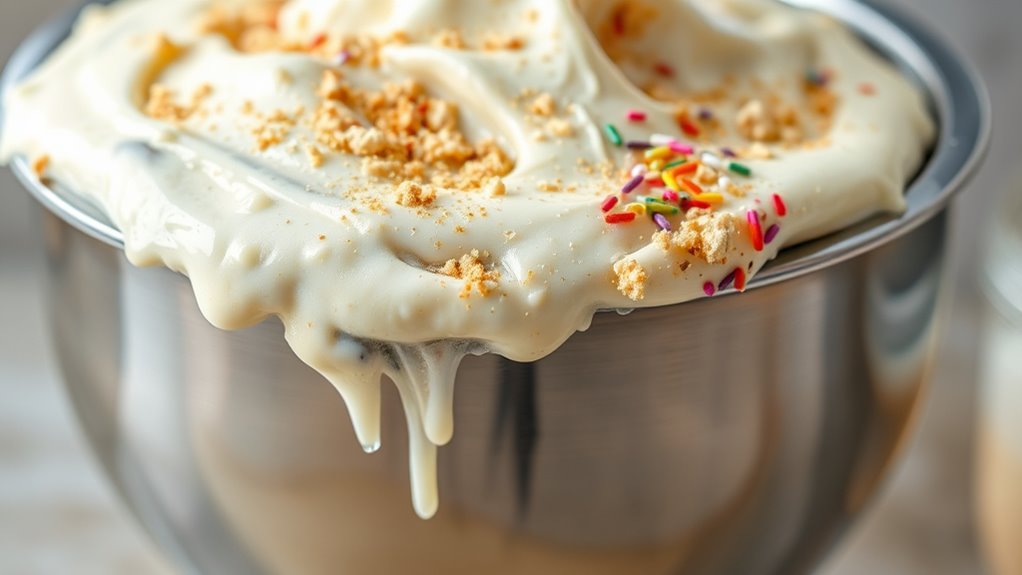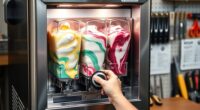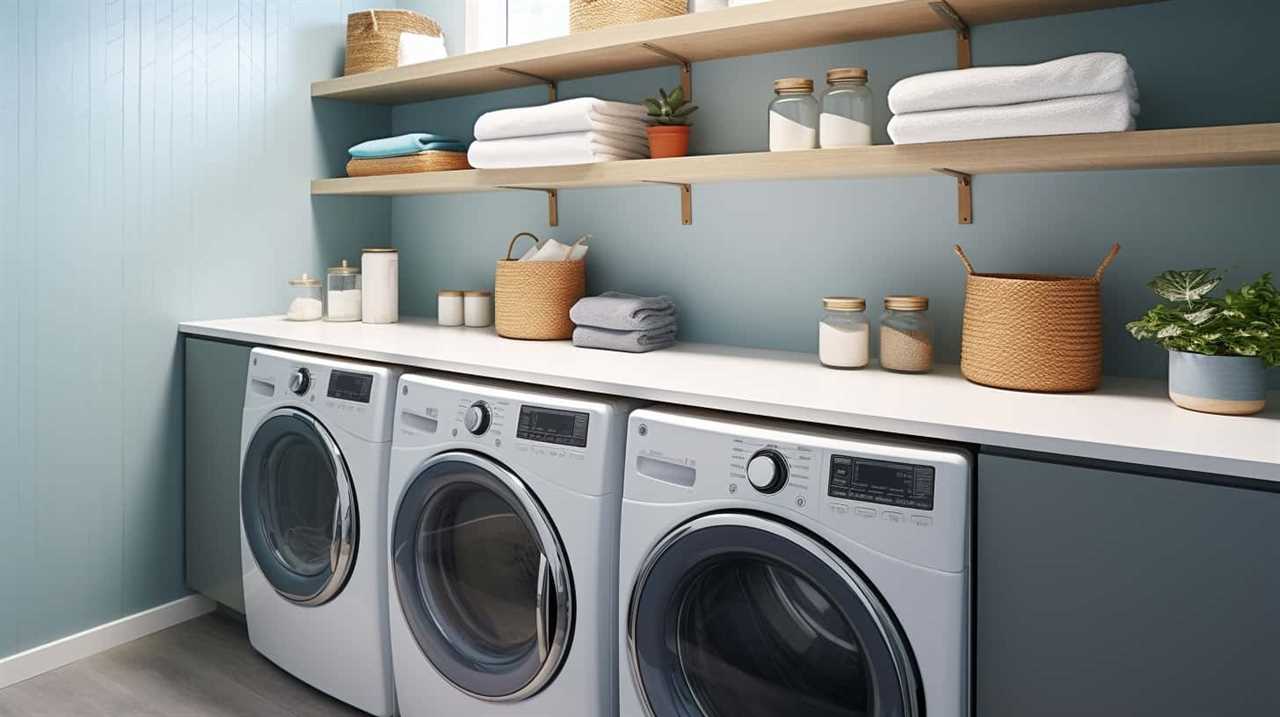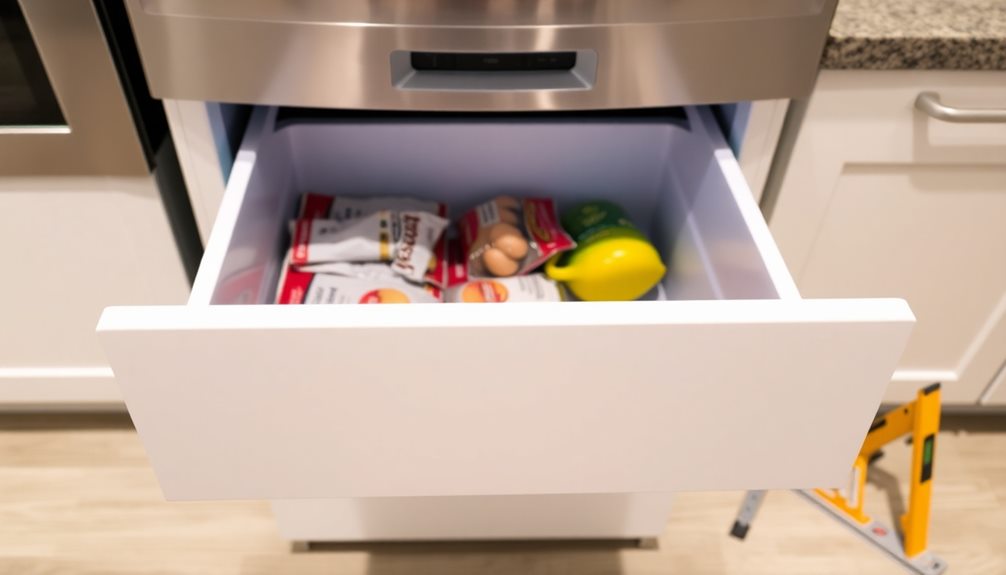If your ice cream maker hasn’t been cleaned recently, it’s probably filthy and needs immediate attention. Bacteria, mold, and residue can build up quickly, affecting the safety and taste of your frozen treats. Regular disassembly, thorough washing with warm, soapy water, and proper drying are essential to keep everything hygienic and working smoothly. Continue with this guide to learn simple steps that will help you sanitize your machine and prevent any health risks.
Key Takeaways
- Residual ice cream, moisture, or debris can harbor bacteria and mold, making immediate cleaning essential.
- Regular disassembly and thorough washing prevent buildup and ensure hygienic, tasty ice cream batches.
- Neglecting cleaning risks contamination, mold growth, and compromised machine performance over time.
- Proper sanitation, including disinfection and drying, keeps your ice cream maker safe and ready for use.
- Consistent maintenance extends your machine’s lifespan and guarantees high-quality, safe ice cream every time.

Keeping your ice cream maker clean is essential to guarantee it operates smoothly and produces delicious, hygienic treats. If you neglect cleaning, bacteria buildup can develop inside the machine, posing health risks and affecting the quality of your ice cream. Bacteria thrive in moist, warm environments, so leftover residue or unwashed parts can become breeding grounds if not properly maintained. By cleaning your machine thoroughly after each use, you eliminate these potential hazards and ensure that every batch of ice cream is safe to enjoy. Regular cleaning also helps prevent mold from forming, which can occur if moisture is trapped within the machine’s components. Mold not only spoils your ice cream but can also cause allergic reactions or respiratory issues, especially for sensitive individuals.
To prevent bacteria buildup and mold growth, it’s crucial to disassemble your ice cream maker after each use. Remove all removable parts such as the dasher, bowl, lid, and any attachments. Wash these components with warm, soapy water, paying special attention to crevices and hard-to-reach areas where residue can hide. Use a soft brush or cloth to scrub away any leftover ice cream or residue that may have dried onto the surfaces. Rinse everything thoroughly to remove soap residue, which can interfere with the taste and interfere with future cleaning. Dry all parts completely with a clean towel or let them air dry before reassembling. Moisture left behind can promote mold growth, so ensuring everything is dry is a vital step. Additionally, proper sanitation practices are critical to maintaining a hygienic ice cream maker and preventing cross-contamination. Implementing proper sanitation routines reduces the risk of bacteria and ensures the safety of your treats. Proper sanitation not only involves cleaning but also disinfecting all parts regularly to eliminate germs effectively. Furthermore, using cleaning solutions recommended by the manufacturer can help extend the lifespan of your machine and keep it functioning optimally. Incorporating filtration and pump protection practices, such as replacing filters regularly, can further safeguard your equipment from clogs and damage, ensuring consistent performance.
Frequently Asked Questions
Can I Use Bleach to Disinfect My Ice Cream Maker?
You might wonder if bleach safety makes it okay to disinfect your ice cream maker with bleach. While bleach is a strong disinfectant, it’s not recommended for food-contact surfaces because it can leave harmful residues. Instead, use disinfectant alternatives like vinegar or commercial food-safe sanitizers. Always rinse thoroughly after cleaning, and verify the machine is completely dry before use. This keeps your ice cream safe and your maker spotless.
How Often Should I Replace the Ice Cream Maker’S Seals?
You should replace your ice cream maker’s seals during your regular maintenance schedule, typically every 6 to 12 months. Keep an eye on signs of wear, cracking, or leakage, which indicate seal replacement is needed sooner. Proper seal maintenance guarantees peak performance and hygiene. By sticking to a consistent maintenance schedule, you prevent contamination and extend your machine’s lifespan, making your ice cream always delicious and safe to enjoy.
Is It Safe to Wash Parts in the Dishwasher?
You might wonder if dishwasher safety applies to your ice cream maker parts. Generally, dishwasher-safe components can be cleaned easily, but always check your manufacturer’s cleaning frequency recommendations. Using the dishwasher ensures thorough cleaning and saves time. However, avoid placing non-dishwasher-safe parts inside to prevent damage. Regularly cleaning your ice cream maker with the right methods keeps it secure and in top condition, supporting safe, delicious treats every time.
What Natural Cleaning Alternatives Are Effective for My Machine?
You can effectively clean your ice cream maker using natural alternatives like vinegar and baking soda. Mix equal parts water and vinegar to wipe down the parts, removing residue and odors. For stubborn buildup, sprinkle baking soda on surfaces, then scrub gently with a damp cloth. These natural options are safe, eco-friendly, and help keep your machine hygienic without harsh chemicals. Regular use of vinegar and baking soda maintains cleanliness effortlessly.
How Do I Remove Stubborn Freezer Burn From the Bowl?
To remove stubborn freezer burn from your ice cream maker bowl, start by mixing equal parts water and white vinegar. Pour this solution into the bowl and let it sit for 15-20 minutes. Use a soft cloth or sponge to gently scrub away any stubborn residue or ice crystals. Rinse thoroughly with clean water, then dry completely. This natural method helps eliminate freezer burn and restores your bowl’s freshness.
Conclusion
If you don’t clean your ice cream maker now, you’re risking a flavor disaster of epic proportions—imagine mold monsters and bacteria bandits taking over your sweet treats! Neglect it for too long, and your next scoop could turn into a microbial nightmare. Don’t let your dessert become a health hazard or a science experiment gone wrong. Clean it today, and enjoy the pure, delicious ice cream you deserve—your taste buds will thank you!








